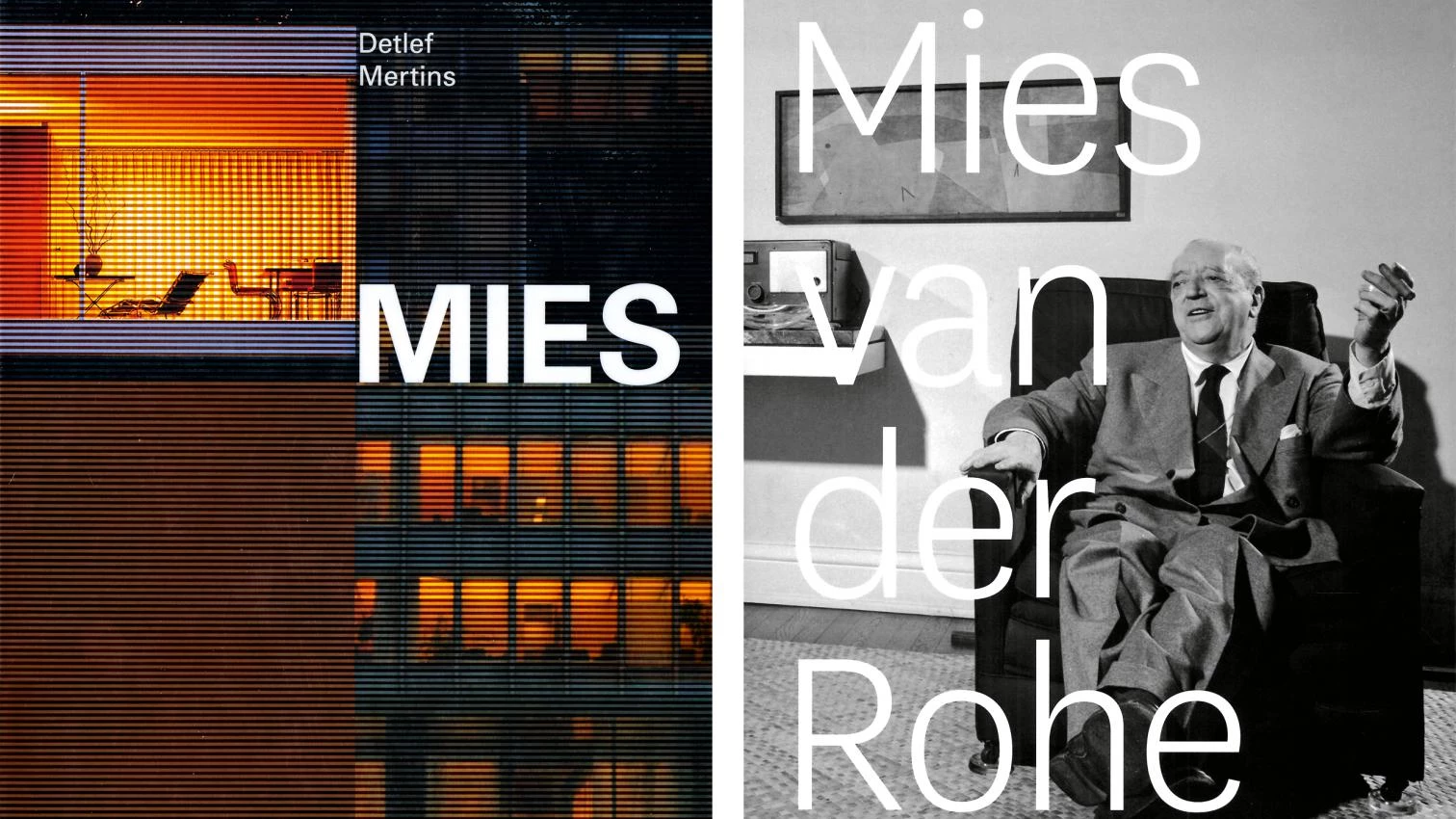
The intellectual testament of a historian who left us too soon, the Mies of Detlef Mertins is a colosal interpretation of the German master’s work using canonical projects that serve to introduce different themes through extensive and very generously illustrated essays. Supervised by several colleagues – Barry Bergdoll, Edward Dimendberg, and Felicity D. Scott besides Mertins’s wife, Keller Easterling – after the author’s death in 2011 at only 56, the monumental volume cannot possibly be mistaken for a coffee table, for though the large format allows impeccable and gorgeous reproductions of Mies van der Rohe’s exquisite work, the essence of the book is in its texts, which link Mies’s architecture to his readings and the thinking of his time.
Mies hardly wrote, but had a substantial library, and from Fritz Neumeyer’s essential publication (Mies van der Rohe, das kunstlose Wort, 1986) we know of the influence of Romano Guardini or Rudolf Schwarz on his worldview; for its part, Mertins’s work puts emphasis on the importance of his biological readings – extensively explored by Oliver Botar – from Raoul Heinrich Francé and Hans Driesch to D’Arcy Wentworth Thompson or William Morton Wheeler.
Detlef Mertins, who was one of the leading scholars of Mies – in fact he was the only one who contributed to the catalogs of the two major exhibitions of recent years, Mies in America (2000) and Mies in Berlin (2001) – pays special attention to his collaborators, in particular Lilly Reich, Ludwig Hilberseimer, and Myron Goldsmith, and extends his analysis to the ties between Mies’s work and architects like Cedric Price, Rem Koolhaas, or Coop Himmelb(l)au, and even artists like Iñigo Manglano-Ovalle. Hermetic at times, as is perhaps common in American academe, but more frequently luminous, this large and elegant book is a posthumous tribute to its author and its subject, and is sure to eventually become a classic.
A classic, too, is the Mies biography by Franz Schulze that was published in 1985, which now reappears in a version revised and extended by a coauthor, the Chicago architect Edward Windhorst. Substantially rewritten to incorporate information that has surfaced in the past three decades – including the authors’ own discovery of transcriptions of the lawsuit case between Mies and Edith Farnsworth, 600 pages offering new perspectives on the architect’s opinions – and significantly expanded to give a more detailed description of the American period – documented through lengthy conversations with his companion of those years, Lora Marx, besides many office employees, students, colleagues, friends, and adversaries – the book remains the best available biography of the Aachen-born master.
Unfortunately, this new edition loses something of the original’s literary balance and narrative tension, and without contributing too many additional illustrations, reproduces the old images with poorer quality and cropping. Those previously familiar with Schulze’s book may be curious to see this enlarged new version, but should not let go of the original.







